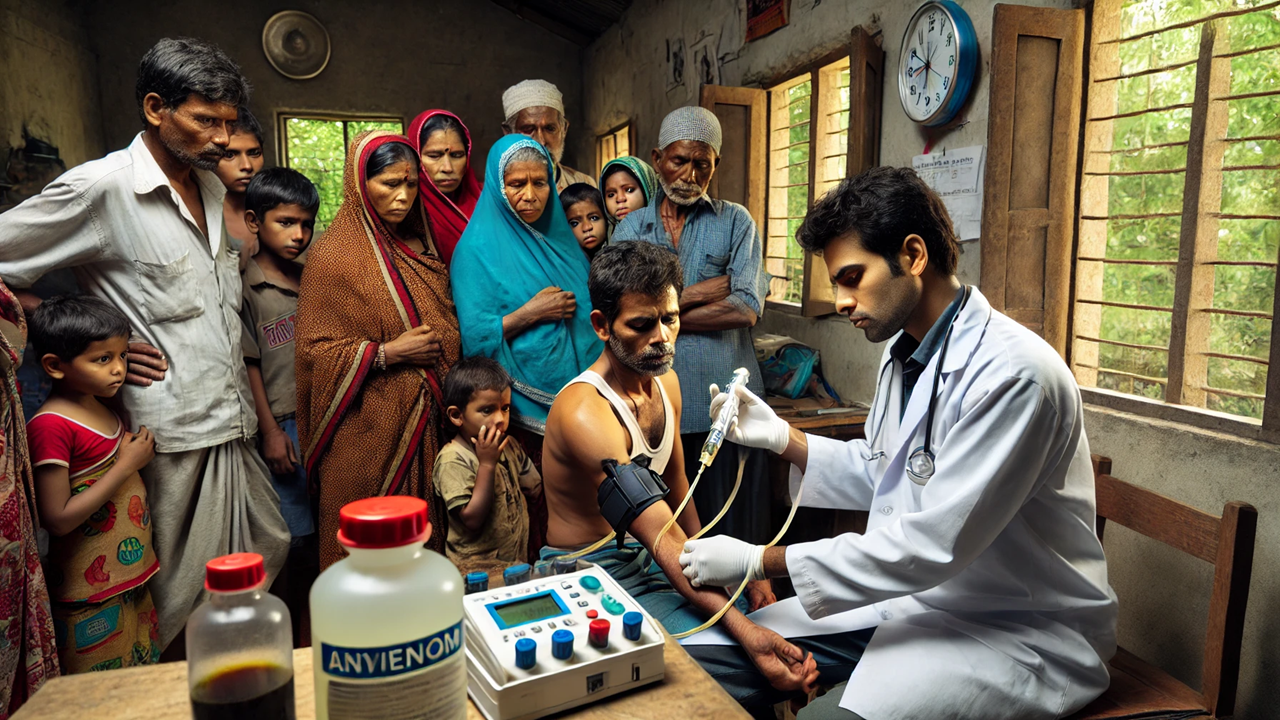Fighting the Bite: The Race to Develop Life-Saving Snakebite Antivenoms in South Asia
The WHO’s report, Target Product Profiles for Animal Plasma-Derived Antivenoms: Antivenoms for Treatment of Snakebite Envenoming in South Asia, sheds light on the dire need for more effective and accessible antivenoms in the region. With millions of lives at stake, the development and distribution of targeted antivenoms, supported by comprehensive healthcare strategies, could drastically reduce the burden of snakebite envenomings across South Asia.

A Regional Crisis Needing Urgent Solutions
Snakebites are a silent killer in South Asia, causing immense suffering and death in some of the world's most vulnerable populations. In a region where rural communities often have limited access to healthcare, snakebite envenoming is a serious public health concern. The World Health Organization (WHO) has recently published a comprehensive report titled Target Product Profiles for Animal Plasma-Derived Antivenoms: Antivenoms for Treatment of Snakebite Envenoming in South Asia, aiming to address this critical issue. The report outlines the urgent need for safer, more effective, and affordable antivenoms tailored specifically to the region's unique snakebite challenges.
The Unseen Toll of Snakebites
Every year, millions of people across South Asia are bitten by venomous snakes. The statistics are staggering: approximately 2.7 million people suffer from snakebite envenomings annually, with up to 138,000 deaths and many more left with long-term disabilities, including amputations and psychological trauma. These figures highlight an urgent need for effective treatment options.
The populations most at risk are those living in rural, agricultural areas, where snake encounters are a daily risk. Often, these communities are among the poorest and most marginalized, with little to no access to timely medical care. The lack of well-regulated, effective antivenoms exacerbates the situation, leading to a vicious cycle of inadequate treatment and high mortality rates.
A Targeted Approach to Antivenom Development
Recognizing the complexity of the snakebite issue, the WHO’s report proposes a targeted approach to developing antivenoms that meet the specific needs of South Asia. The report outlines four key types of antivenoms:
Broad-Spectrum Polyvalent Antivenoms: These are designed for use against bites from a wide range of snake species, particularly when the snake responsible for the bite cannot be identified. Such antivenoms are crucial in areas where multiple venomous species coexist, making species identification challenging.
Monovalent Antivenoms: These are intended for bites from specific snake species. This approach is particularly useful in areas where a single species is responsible for most snakebite incidents.
Syndromic Polyvalent Antivenoms for Neurotoxic Envenoming: These antivenoms target neurotoxic effects, which are often caused by bites from species like cobras and kraits. Neurotoxic venom can cause rapid paralysis, making timely administration of the correct antivenom vital.
Syndromic Polyvalent Antivenoms for Non-Neurotoxic Envenoming: These focus on other severe effects such as hemorrhaging and tissue damage, often caused by viper bites.
The report emphasizes the need for these antivenoms to be not only effective but also safe, affordable, and accessible, ensuring they reach those in need, especially in remote rural areas. It also highlights the importance of adhering to Good Manufacturing Practices (GMP) to ensure the quality and safety of these life-saving products.
Meeting the Challenges Head-On
The WHO's report is not just a blueprint for better antivenoms; it’s a call to action for governments, manufacturers, and healthcare providers across South Asia. To break the cycle of inadequate treatment, the report recommends several operational strategies:
Training and Education: Proper training for healthcare workers is essential. This includes recognizing the symptoms of different types of envenomings and knowing how to administer the appropriate antivenom quickly and effectively.
Improved Access: Antivenoms should be available at all healthcare system levels, from primary health centers to major hospitals. This decentralization ensures that even the most remote communities can access life-saving treatments.
Affordability: The cost of antivenoms should be balanced to ensure they are affordable for both health systems and patients, without compromising the quality or sustainability of production.
Supportive Therapies: Alongside antivenom, other supportive treatments must be available to manage the various complications that can arise from snakebites, such as bleeding disorders and kidney failure.
The report also calls for collaboration between stakeholders to ensure that antivenoms are developed and distributed in a way that meets the specific needs of South Asia, considering the diversity of snake species and the varying effects of their venoms.
- READ MORE ON:
- Snakebite
- Antivenom
- WHO
- South Asia
- Public Health
- Rural Healthcare
- Venomous Snakes
- FIRST PUBLISHED IN:
- Devdiscourse
ALSO READ
WHO Thanks UAE for $5 Million Contribution to Gaza Polio Vaccination Drive
Harris calls on Trump to debate with mics 'on the whole time'
Breakthrough in Tuberculosis Treatment: WHO Introduces New Regimens to Combat Drug-Resistant TB
Jannik Sinner: The Rising Star Who Dominated the U.S. Open Third Round
Kia India Sees 17% Year-On-Year Increase in August Wholesales










